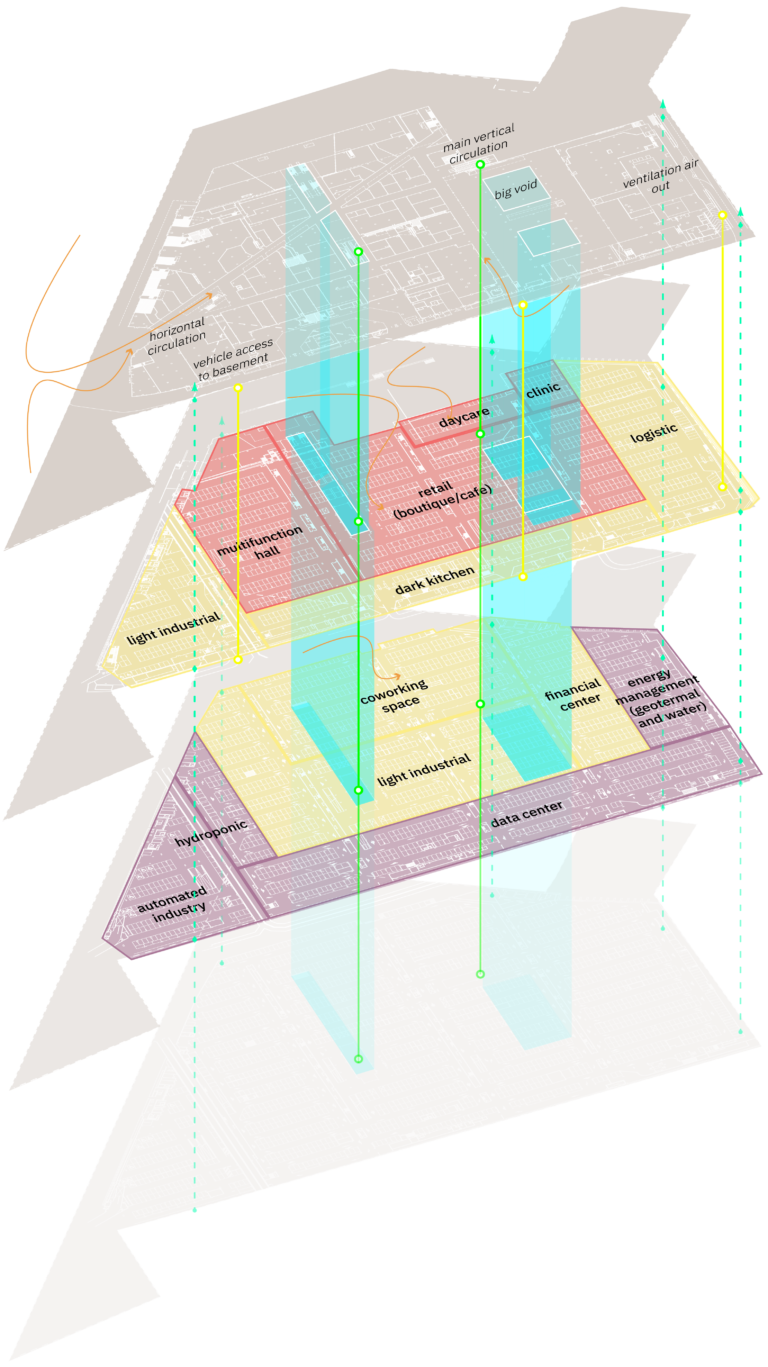Deep City
Competition - Honorable Mention (2022)
A Group Project With Timothy Immanuel
Abstract
On May 2022, my partner and I challenged ourselves to join a 72 hours car park competition with a question:
With such underground parking occupying Paris’s underground, what if people are leaving their private vehicles and instead of taking public transport everywhere? Taking to the extreme, what if cars go extinct?
We explored the future of car park usage: with a module from the existing column, what kind of activity will the car park accommodate. We categorize the activity based on the user. We also researched the site and the country to seek the most sustainable industry that should occupy the abandoned car park. Our goal is to design the future car park, where new programs will reuse abandoned car parks. we also propose a plan using a series of phases so that the car park can gradually adjust following the utopian future.
What If Cars Go Extinct?
We take us to the utopian world where public transport is moving us everywhere. They’re free to use and adaptable to any weather and conditions. Underground parking spaces will be abandoned and no longer can be used. We try to reinitiate the underground as a new bustling living space.
Car Park Usage Study
The studies listed some feasible programs that can be embedded in the unused underground parking including the modular area and the degree of human-needed activity.

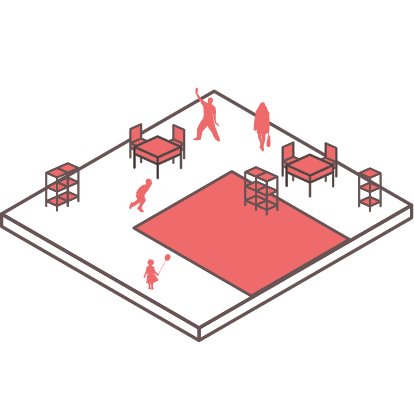
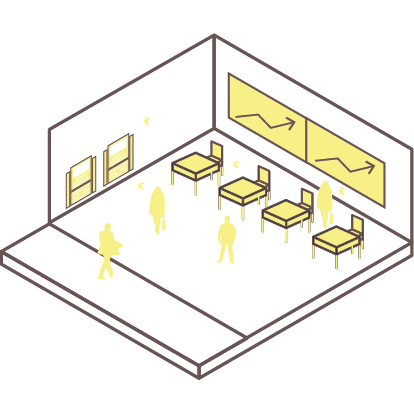
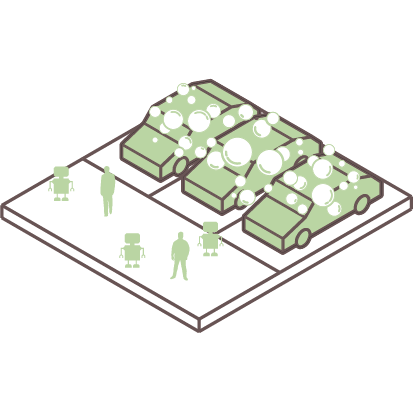
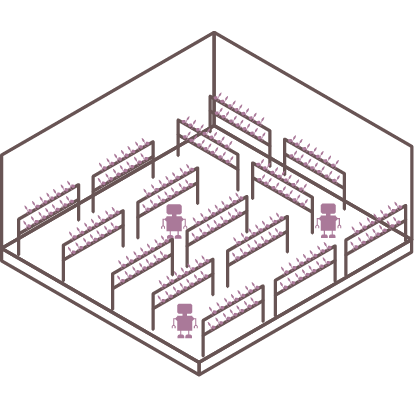
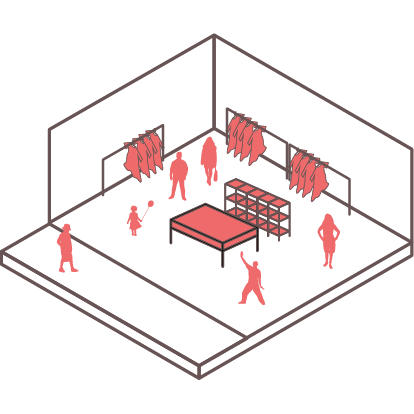
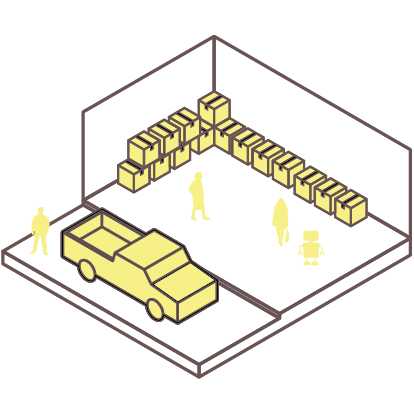
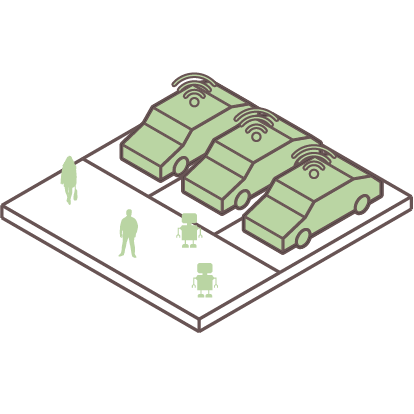
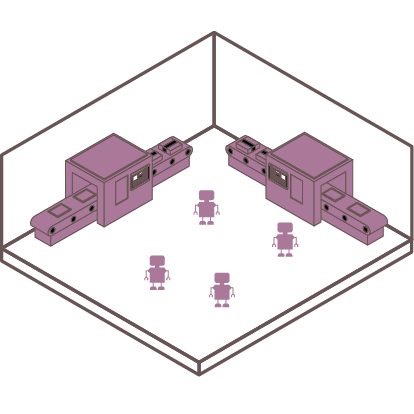
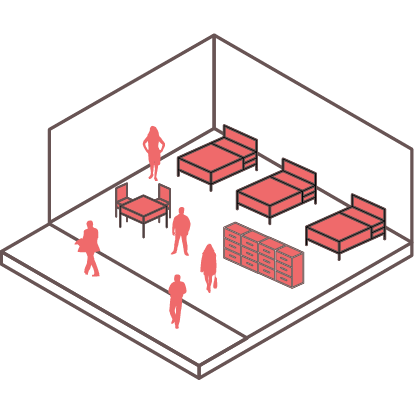
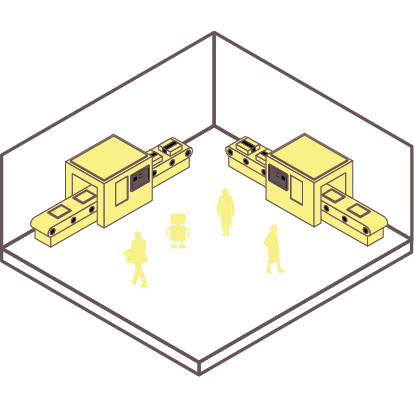
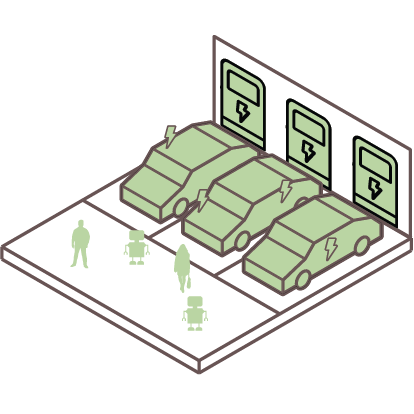
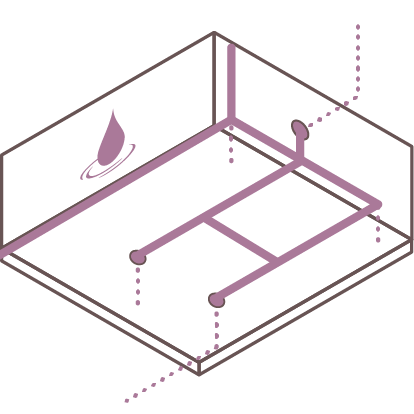
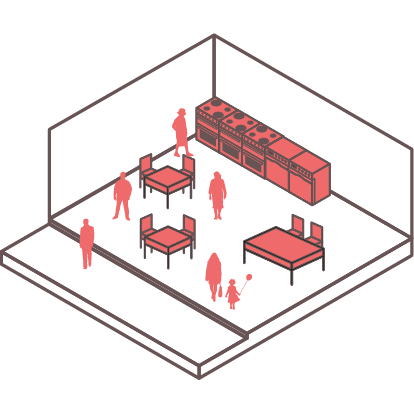
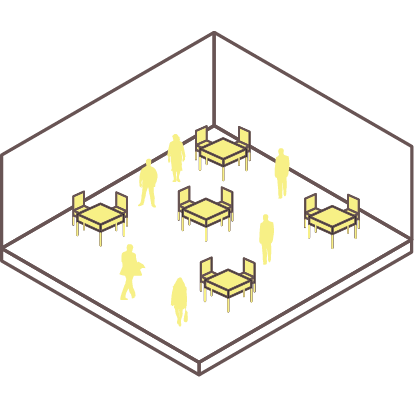
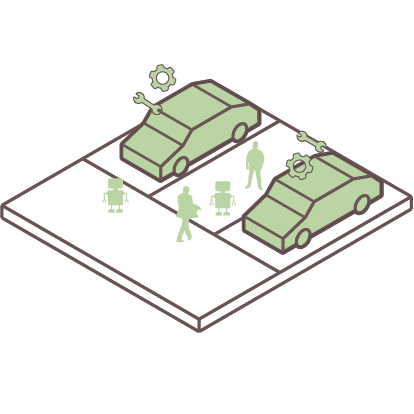
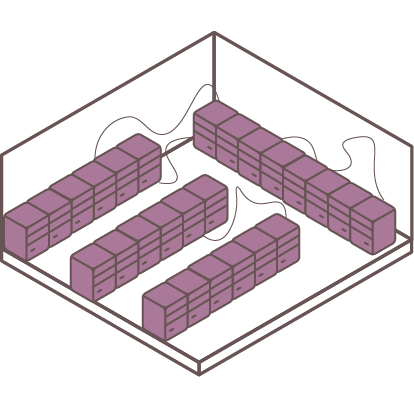
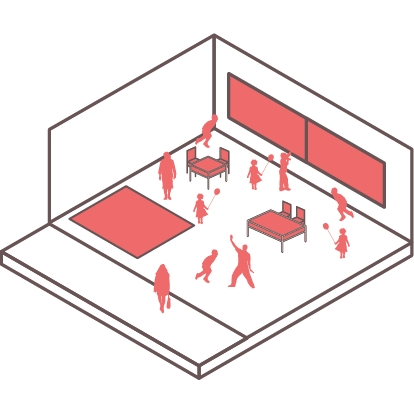
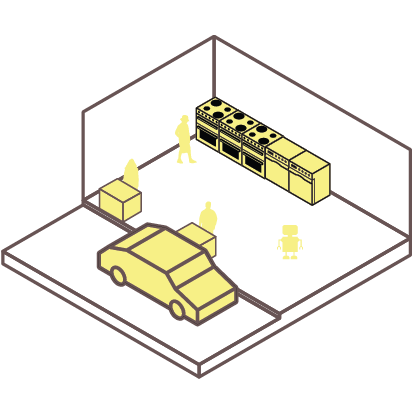
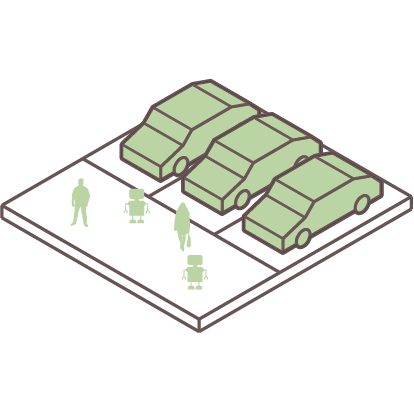
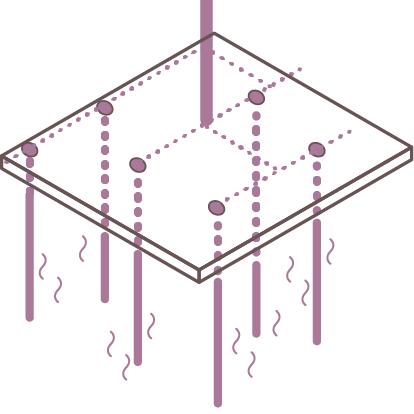
Urban Planning: Phases
There are many possibilities for future mobility, but the implementation can be challenging. In the meantime, underground parking is used 100% for private vehicles even though there are some additional services like car washes and charging stations. We propose a series of phases, from the one that can be realized in the nearest future to the utopian one. The phases of the underground car park are adjusted accordingly:
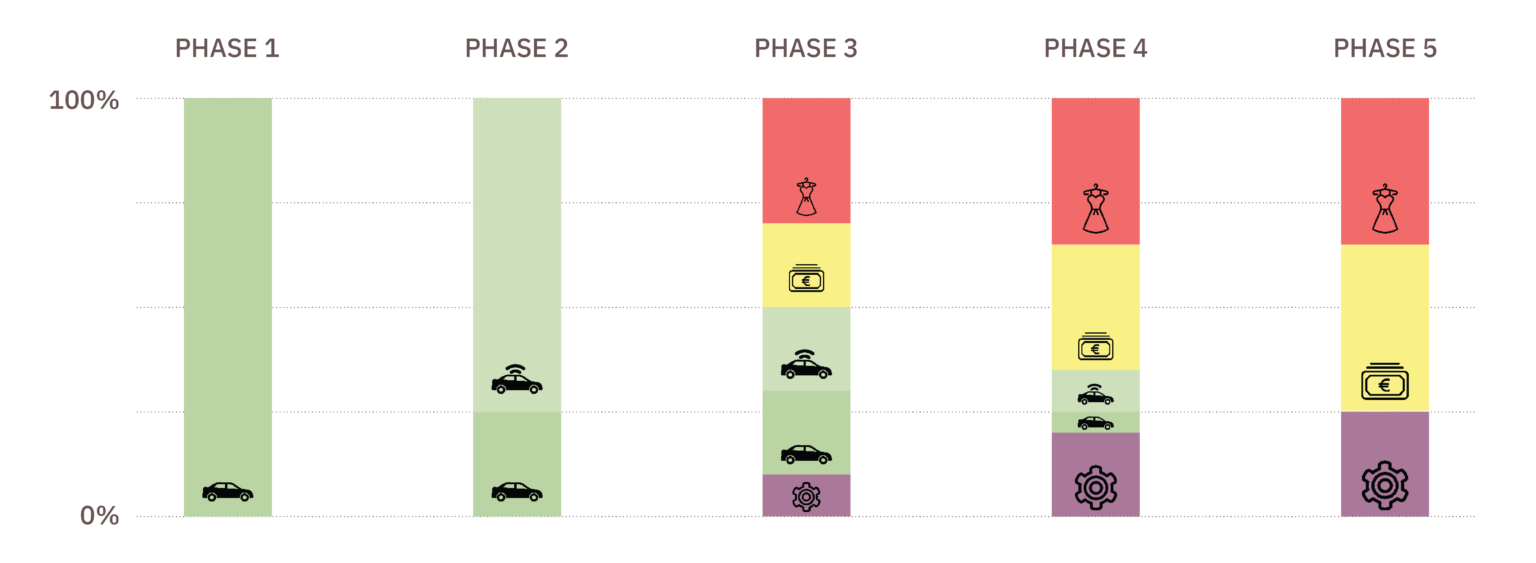
In 2020, services contributed the most to France’s gross domestic product (GDP) over 71 percent. Employment is expected to increase slightly as well, contributing to over 2.8 billion jobs in France (stastista.com). With the current situation, the services sector is expected to grow further and the phases above provide the nation’s economic growth as well. Phase 1 accommodates only private vehicles to park, while in phase 2 the shared vehicles started to fill in the spaces. The OPnGO apps must be used to reserve parking spaces in phase 3 onward for calculating the occupied and vacant “reserve only” parking space. In the third and fourth phases, underground car parks begin to welcome the mass to do business and leisure while minimizing the area for the car park itself. In the final phase, the main programs in the underground are retail, services, and energy management that welcome further collaboration between humans and AI.
Site Analysis
Euralille is one of the most important urban quarters of France as it is located at the intersection of the high-speed railway lines, linking Paris, Brussels, and London. With Triangle des Gares, Jean Nouvel as well as Rem Koolhas aspire to make a linking space, connecting Lille-Europe and Lille-Flanders train station.

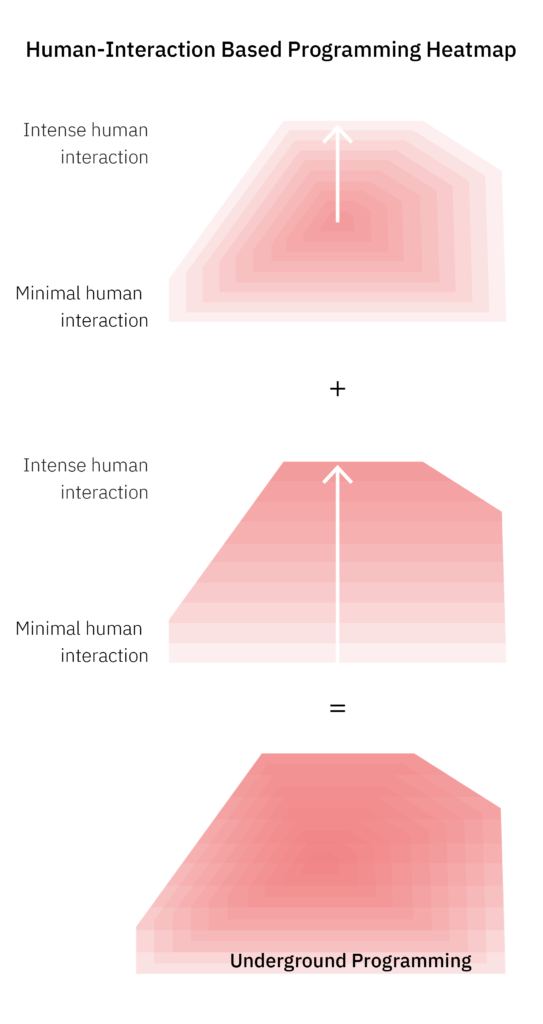
Concept and Visioning
We tried to imagine how to expand this concept in the underground with our concept called DEEP CITY. As its name, we try to broaden the city itself down far below ground level. Therefore, we use the study and analysis written above to make the space as flexible as possible so that it can accommodate further development.
We tune the categorized activities from the car park usage study to the human interaction programming from the heatmap. The zoning also will be considered vertically, with the level above having more human interaction than the below ones.
The activity spaces will be modular as the study suggest to compensate for the existing column. With the same module, the activity will be flexible to adjust if there are any further developments. For example, if there will be development to add another basement level, the activity that does not require humans such as data centers will be moved to the deepest basement level. Then, the remaining spaces will be adjusted to more human-needed activities, such as car wash.
We try to make some humongous voids to enhance natural light so that the underground space that used to be dark with a low ceiling can be as lively as ground-level space. The void will always be taken into account for further development because it is one of the main keys to making ground level as lively as the ground level space. With further underground development, we can connect Triangle des Gares with Lille-Europe and Lille- Flanders train stations, making movement within spaces more convenient.
